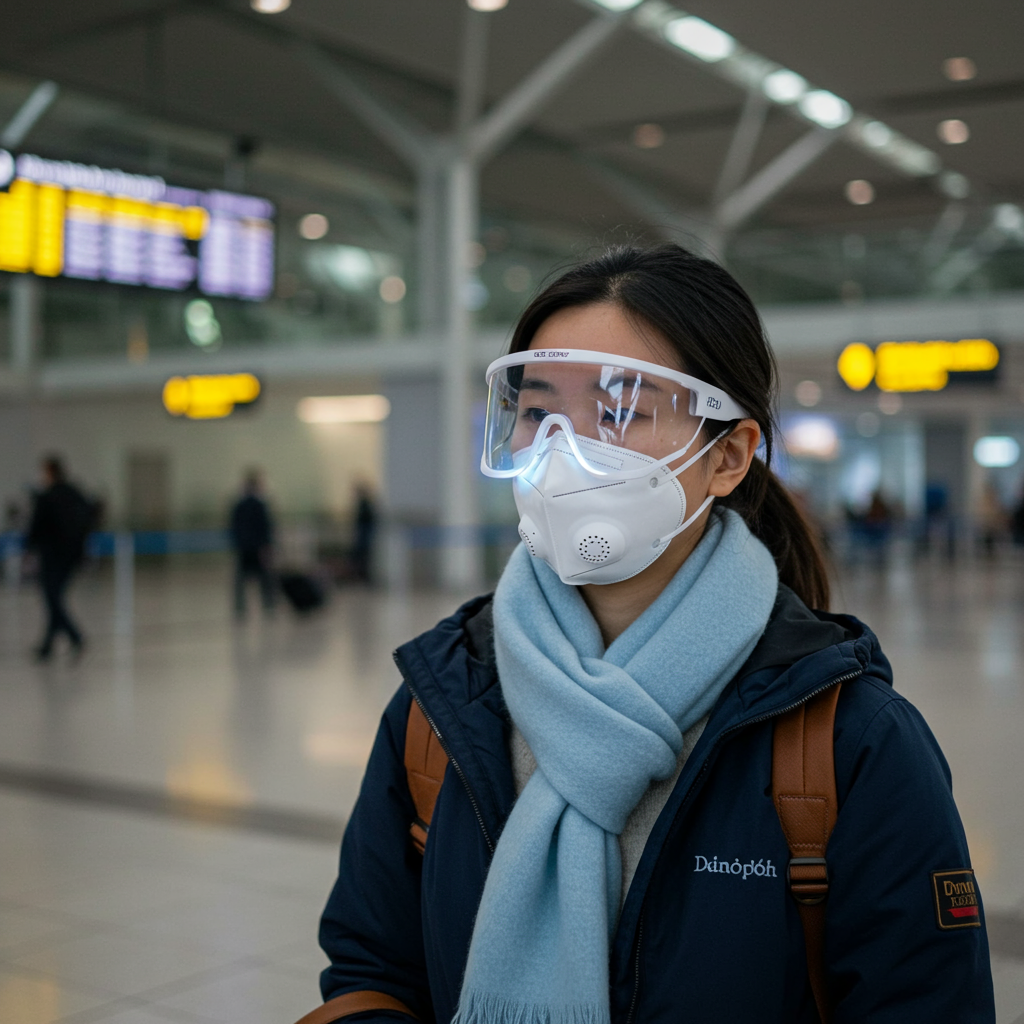Share on Pinterest
measles is a highly contagious airborne disease. It spreads easily and quickly, posing a significant risk, especially for travelers using enclosed transport like planes, buses, or trains. Recent increases in measles cases and outbreaks in the United States and globally highlight the importance of understanding how to protect yourself.
Health authorities, including the Centers for Disease Control and Prevention (CDC), are urging everyone traveling internationally to ensure they are fully vaccinated against measles. Travelers, along with young children, older adults, unvaccinated individuals, and those with compromised immune systems, are particularly vulnerable groups. travel environments, with their shared air and close quarters, can significantly heighten the risk of exposure to viruses like measles. Staying informed and taking proactive steps is essential to minimize your infection risk and prevent further spread.
Why Measles is a Serious Travel Concern
Measles is among the most infectious viruses known to humans. It spreads primarily through respiratory droplets released when an infected person coughs or sneezes. The virus can also spread via touch if someone touches contaminated surfaces and then touches their mouth, nose, or eyes. What makes measles particularly challenging is its ability to remain active and contagious in the air or on surfaces for up to two hours after an infected person has left the area.
This airborne nature makes travel environments like buses, trains, and especially planes, potential hotbeds for transmission. Infectious disease expert Monica Gandhi, MD, MPH, notes that because the virus can linger in the air, traveling during an outbreak increases risk in these often sealed-off spaces. David Cutler, MD, a family medicine physician, adds that any close proximity to an infected individual during travel can lead to exposure. Prolonged close contact in aircraft cabins may present a higher risk compared to other modes of transport.
Understanding Measles Symptoms and Spread
Measles symptoms typically begin subtly 7 to 14 days after exposure, though this can extend up to 21 days. Initial signs often include a high fever, cough, runny nose, and red, watery eyes (conjunctivitis). About two to three days later, tiny white spots with bluish-white centers (Koplik spots) may appear inside the mouth. The hallmark measles rash develops three to five days after the first symptoms. It usually starts on the face near the hairline and spreads downwards across the body. The rash often appears as flat red spots that may merge as they spread. A person with measles is contagious from four days before the rash appears until four days after.
The risk of acquiring measles depends on several factors. These include your individual susceptibility (mainly vaccination status), the presence of active cases nearby, and gaining proximity to someone infected. Being aware of current global and regional outbreaks is crucial for assessing your personal risk before travel.
The Global and U.S. Measles Situation
Measles outbreaks are on the rise worldwide. In 2023 alone, an estimated 10.3 million people were infected globally. Outbreaks are currently occurring in every region across the globe. Anyone not protected against measles is at risk when traveling abroad and can easily bring the virus back home, potentially starting domestic outbreaks.
While the United States achieved measles elimination status in 2000, cases and outbreaks still occur. These are primarily triggered by unvaccinated individuals traveling internationally who contract the virus abroad. The CDC states that typically two out of three such travelers are Americans. When these travel-related cases occur in U.S. communities with low vaccination coverage, large outbreaks become possible.
Recent trends are concerning. Following a decrease during the COVID-19 pandemic, measles activity is increasing again globally and within the U.S. As of mid-2025, the U.S. had reported 483 confirmed measles cases across more than a dozen states, including California, Florida, Ohio, and Vermont. This total already surpassed the 285 cases reported for the entirety of 2024. High concentrations in 2025 have been noted in Texas, New Mexico, and Kansas. Alarmingly, 97% of these 2025 U.S. cases occurred in people who were unvaccinated or whose vaccination status was unknown. Europe also saw a substantial surge, reporting its highest case numbers in over 25 years during 2024.
Your Essential Travel Defense: Proven Prevention
The most effective way to protect yourself from measles, especially when traveling, is through vaccination. Experts universally agree on this measure.
Get the MMR Vaccine
The measles, mumps, and rubella (MMR) vaccine is highly effective. Two doses offer approximately 97% protection against measles, providing lifelong immunity for most people. One dose is about 93% effective. Breakthrough cases in fully vaccinated individuals are rare and tend to be milder.
Travelers should aim to get vaccinated at least two weeks before their trip to allow immunity to develop. Carry proof of your vaccination status, particularly when visiting destinations with ongoing outbreaks.
Vaccination recommendations for travelers:
Infants (6-11 months): Should receive an early dose of the MMR vaccine before international travel. This dose does not replace the routine doses given later.
Children (12 months or older): Should receive their first routine dose now and the second dose at least 28 days later.
Teenagers and Adults: Those without documented immunity need two doses of the MMR vaccine, administered at least 28 days apart. Adults born before 1957 are generally considered immune, but individuals unsure of their status should consult a healthcare provider.
Additional Protective Measures
While vaccination is paramount, other steps can provide added layers of protection:
Wear a Mask: Measles spreads via airborne transmission. Wearing a tight-fitting, filtering mask like an N95 or KN95 can help, especially indoors, in crowded travel settings, or areas with outbreaks.
Practice Good Hygiene: Frequent and thorough hand washing with soap and water, using hand sanitizer, and avoiding touching your face (mouth, nose, eyes) can minimize transmission via contaminated surfaces.
Seek Ventilation: If possible, choosing environments with good ventilation can help. For instance, sitting near an open window on a bus or train (if available) may offer some limited protection, according to Dr. Gandhi.
Assessing Your Risk and Staying Informed
To determine your individual risk level, consider your vaccination history, overall health, and destination. Monitor resources like the CDC Travel Health Notices and WHO Disease Outbreak News. These sources provide up-to-date information on global hotspots and outbreak locations, helping you make informed decisions about your travel plans and necessary precautions. Avoiding travel to high-risk areas if you are unvaccinated or vulnerable can also help minimize infection risk.
What to Do If You Suspect Exposure
Measles has an incubation period typically ranging from 7 to 21 days after exposure. If you believe you have been in contact with someone who had measles during or after travel, it is crucial to act quickly. Symptoms to watch for in the weeks following exposure include high fever, cough, runny nose, red eyes, and the characteristic rash.
Contact healthcare providers immediately and isolate yourself to prevent potentially spreading the disease. Dr. Gandhi stresses presenting to a medical facility (after calling ahead!) so supportive care can be provided and contact tracing initiated. Having basic phrases to describe symptoms in the local language might be helpful if you are abroad.
Post-Exposure Options for the Unvaccinated
For individuals who are not protected by vaccination or prior infection and have been exposed to measles, timely interventions can potentially prevent or reduce the severity of the illness.
Dr. Cutler notes that administering the MMR vaccine within 72 hours of exposure can help prevent infection. Another option is intramuscular or intravenous immune globulin (IG). This is typically reserved for specific high-risk groups, including infants under 6 months old, pregnant women without immunity, or those who are 3-6 days past exposure, as the vaccine may be less effective or contraindicated for them in this timeframe.
Potential Complications of Measles
Measles is far more serious than just a rash. It can lead to significant health complications, particularly in vulnerable groups. Common issues include ear infections (about 1 in 10 children) and diarrhea (about 1 in 10 people). More severe complications can be life-threatening. Pneumonia, a lung infection, is the leading cause of measles-related death in young children, affecting about 1 in 20 cases.
About 1 in 1,000 children with measles develop encephalitis, which is inflammation of the brain. This can cause permanent brain damage, leading to convulsions, deafness, or intellectual disability. Sadly, for every 1,000 children who get measles, 1 or 2 will die in the U.S. A rare but fatal complication, subacute sclerosing panencephalitis (SSPE), can develop years after the initial infection, particularly if infected before age two.
There is no specific cure for measles; treatment focuses on supportive care such as maintaining hydration, ensuring good nutrition, and managing fever. While Vitamin A administered by healthcare professionals can help lessen disease severity, it is not a substitute for vaccination. Seeking medical attention is vital to confirm diagnosis, receive supportive care, and initiate contact tracing. The estimated 1 in 1,000 risk of death underscores the seriousness of this preventable disease.
Monitoring Your Health After Returning
After your travels, continue to monitor your health for three weeks. Pay close attention to symptoms such as a rash accompanied by a high fever, confusion, or breathing problems. If you develop any of these signs, contact your healthcare provider immediately, informing them of your recent travel history and potential exposure. Taking prompt action protects both your health and your community.
Frequently Asked Questions
How exactly does measles spread, especially while traveling in enclosed spaces?
Measles is highly contagious and spreads through airborne droplets when an infected person coughs or sneezes. These tiny particles can remain infectious in the air for up to two hours after the person leaves. In enclosed spaces like planes or buses, the virus circulates, making exposure more likely for susceptible individuals even without direct close contact. It can also spread by touching contaminated surfaces.
Where can travelers find current information about global measles outbreaks and risks?
Reliable sources for monitoring measles activity worldwide include the CDC Travel Health Notices and the WHO Disease Outbreak News. These resources provide updated information on countries and regions experiencing outbreaks, helping travelers assess risk levels for their specific destinations and take appropriate precautions based on the current situation.
When is the best time to get the MMR vaccine before international travel?
Ideally, travelers should get the MMR vaccine at least two weeks before their trip to allow enough time for immunity to develop. For infants aged 6-11 months traveling internationally, an early dose is recommended before departure. Children 12 months and older should follow the standard two-dose schedule, ensuring the first dose is given, and the second at least 28 days later if possible before travel. Adults needing vaccination also require two doses 28 days apart.
Staying informed and vaccinated are the most powerful tools you have against measles, whether at home or exploring the world.



